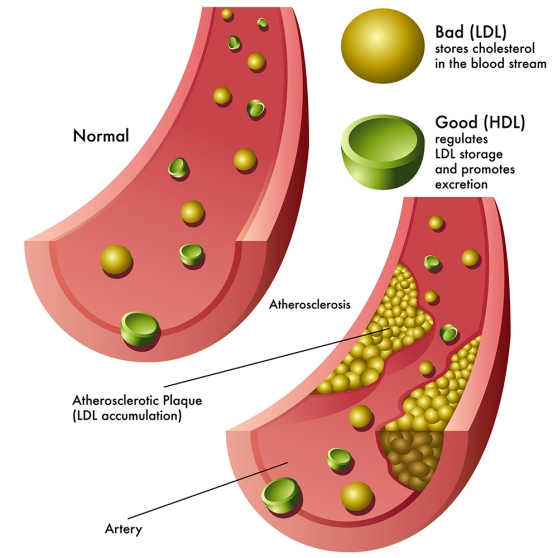Cholesterol 101
Cholesterol can't travel alone through the bloodstream — it has to combine with specific proteins. These proteins bind with the cholesterol and transport it to different parts of the body. When this happens, cholesterol and protein form what’s called a lipoprotein. There are two main types of lipoproteins — high-density (HDL) and low-density (LDL). LDL lipoproteins may be referred to as "bad cholesterol" while HDL lipoproteins may be referred to as "good cholesterol" because of their different effects on the body. HDL removes cholesterol from the blood vessels and carries it back to the liver, where it can be processed and sent out of the body. Most cholesterol is LDL — the cholesterol that's most likely to clog blood vessels and keep blood from flowing through the body. Over time, LDL cholesterol can collect and form a lump called a plaque in the walls of arteries (blood vessels that transport blood from the heart). As this process continues, the plaque can slowly block the artery. A sudden rupture of the plaque’s surface can lead to a blood clot.
KidsHealth.org “What is Cholesterol?” American Heart Association “Good Vs. Bad Cholesterol” Mayo Clinic “High Cholesterol” American Heart Association “Saturated Fats” Harvard School of Public Health “Top Food Sources of Saturated Fat in the U.S.” Mayo Clinic High Cholesterol “Treatments and drugs” Mayo Clinic “Cholesterol medications: Consider the options” Image courtesy of Kydriashka | Dreamstime.com Image courtesy of Christopher Smith | Dreamstime.com Image courtesy of Rob3000 | Dreamstime.com Image courtesy of Skypixel | Dreamstime.com Image courtesy of Stokkete | Dreamstime.com Image courtesy of Marek Uliasz | Dreamstime.com Image courtesy of Voyagerix | Dreamstime.com Image courtesy of Skypixel | Dreamstime.com Image courtesy of Pilar Echeverria | Dreamstime.com

